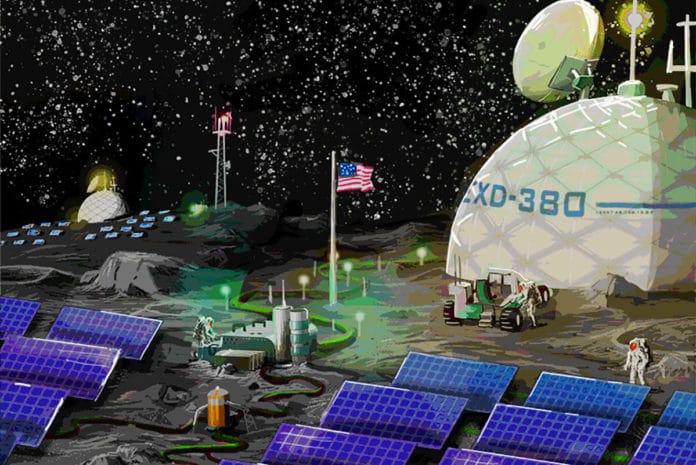Sandia National Laboratories researchers are working with NASA to design reliable and resilient electrical microgrids for future lunar bases. The microgrids will handle the power distribution from the Moon base to the various living and support facilities.
NASA’s plan for its concept Artemis lunar base consists of a habitation unit – complete with room for up to four astronauts – as well as the potential for separate mining and fuel processing, called in-situ resource utilization facilities. Early Artemis missions will include short stays at the base camp with the goal to build up to stays of two months at a time. It will have to operate through the 14-day lunar night, which means solar panels aren’t a practical option.
The mining and processing facilities could produce rocket fuel, water, oxygen, and other materials needed for extended exploration of the lunar surface while decreasing supply needs from Earth. This facility will be located far away from the base camp. So other science and technology activities conducted there won’t be disrupted, but the electrical grid for the two units will be connected during emergencies for resiliency and robustness.
One part of the Sandia team is designing an electrical system controller for the mining and processing center’s microgrid, while the other is developing a system that will connect the two lunar microgrids and is studying the power flow and operation between the two microgrids. The proposed lunar microgrids, one at each facility and connected to one another, will be very similar to the International Space Station’s direct current electrical system.
“There are some very important differences between something like an ISS-type microgrid to something that has the extent of a moon base,” said Jack Flicker, a Sandia electrical engineer. “One of those differences is the geographic size, which can be problematic, especially when running at low DC voltages. Another is that when you start to extend these systems, there will be a lot more power electronics as well as a lot more distributed energy resources that will exist throughout the base. Sandia has been looking at microgrids with a lot of distributed energy resources for quite a long time.”
In addition, Sandia electrical engineer team has been designing the software to regulate the electricity of the mining and processing center since early summer 2021, so the voltage levels remain even as demand shifts across time scales ranging from milliseconds to entire seasons. To do this, Sandia has developed a specialized Secure Scalable Microgrid facility and control-system-design methodology to determine the specifications for how much energy storage the base needs and their requirements.
The major focus of the Sandia researchers is developing a system that will connect the mining facility and habitation unit microgrids for resiliency and robustness. There are two primary ways to get resiliency in a microgrid – one is to have the ability to flexibly route power where it’s needed, and the other is to over-size everything to ensure there is enough power even if multiple things fail.
